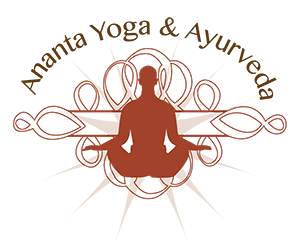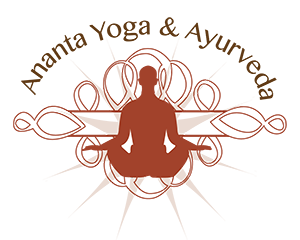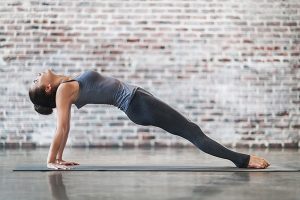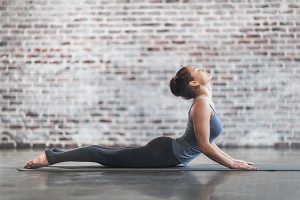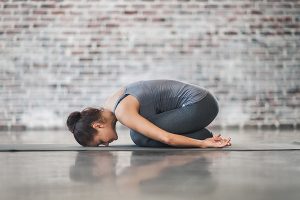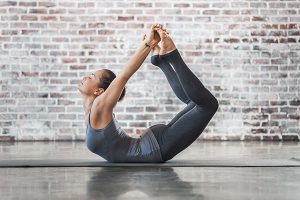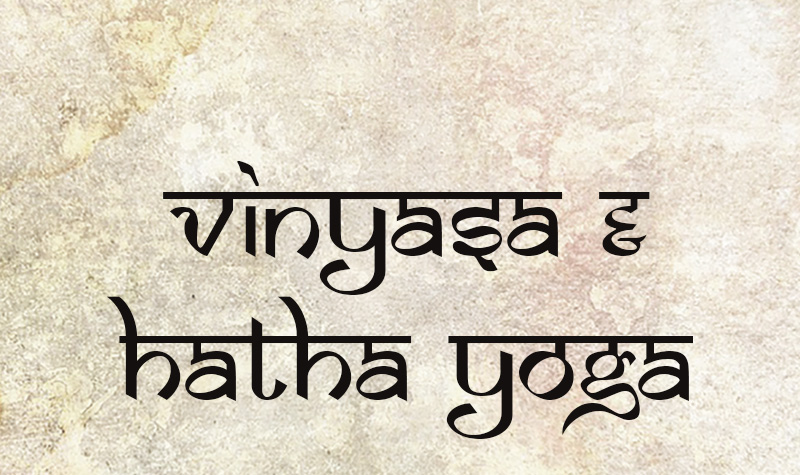
Vinyasa / Hatha Yoga
Vinyasa Yoga is a form or a method of teaching Classical Yoga. It is the step by step study, practice and attainment of Yoga (unification) of Mind, Body and Breath (Hatha Yoga) into one harmonious experience.
To explain the teaching approach of Hatha Yoga through the methodology of the Vinyasa system it is important to understand the practices of Yoga presented in Patanjalis Yoga Sutras and The Hatha Yoga Pradipika – amongst other important texts – which it embodies and teaches.
These are gently paced, well planned courses of generally 6, 8 or 10 consecutive classes which starts at the very beginning. Students learn how to align, open and strengthen the body gradually while stabilizing the platforms of the feet and ankles, hips and pelvis and shoulder girdle.
A gently paced class in which the focus is very much on building a safe and strong practice using the Hatha Yoga principles of alignment and correct use of the breath.
This class moves at a more flowing pace and slightly more advanced postures and vinyasas (sequences linking one pose to the next) are introduced through the Vinyasa Krama teaching methodology.
This class moves at a more flowing pace and slightly more advanced postures and vinyasas (sequences linking one pose to the next) are introduced through the Vinyasa Krama teaching methodology.
Yoga – In its entirety, is the study, practice and application of the Eight – Limbed Path (Ashta – Anga) of Yoga gifted to us by Patanjali in his Yoga Sutras. The map of the eight limbed path deals with all of the elements of fundamental human suffering due to physical and mental ailments and unhelpful external influences from the world and societies we live in. By following this eight limbed path or map – little by little the suffering of human existence dissolves and a state of peace prevails.
The system of Hatha Yoga is a three part process (maha yoga) whereby a set of tools as described in The Hatha Yoga Pradipika – (asana, kriya, pranayama, mudra, yantra, mantra and laya ) are used correctly and appropriately in the implementation of the steps of Patanjalis eight-fold path. If practiced diligently this path leads towards the unification of the two opposing solar and lunar energies of sun (ha) and moon (tha) – hatha – which is the state of samadhi or Raja Yoga (royal union) and mental clarity and peace.
Yoga is a system that can be used to achieve enlightenment or self-realisation. Although this is the ultimate goal of yoga it can not become a fixed state of attachment. Yoga is an ever evolving process of small realisations and enlightenments as we learn from and make our way through the lessons of life.
By becoming attached to the concept of enlightenment/eternal bliss as being something other than our natural state – we set ourselves up for disappointment, suffering and restlessness while missing out on the lessons the entire process is there to teach us. The idea of getting somewhere or attaining something creates yet another duality or separation in which we become bound. While the sincere practitioner keeps his/her mind firmly fixed on the end goal which is to realise the nature of ones true self – It is the journey and the process – not the destination which holds the key to liberation (moksha) from suffering.
Through the teachings of Yoga & Samkhya philosophies, we discover firstly who we are not before realising the true nature of the Self which is the all pervading non-dualistic consciousness hidden by the veil of Maya (illusion).
Regular yoga practitioners treat their body with great respect as it is considered to be the vehicle of the soul and its potential awakening. Yoga students receive numerous physical & mental benefits. These include – increased strength, flexibility & stamina, increased energy and vitality, improved general health, a greater awareness and discernment of limiting & habitual thought patterns and attitudes to nutrition & lifestyle habits (samskaras), enhanced mood, concentration, mental clarity and an overall sense of calm and well-being.
Please firstly follow the links below to read about the various class levels on offer so you can make an informed decision about which class is most suitable for you at this time.
Beneath the class descriptions you can then follow the link to the full schedule of weekly classes/courses to help you find a class at a suitable time.
You can also follow direct links below to the Teacher Profiles of our instructors.
If you cant find the class you are looking for on the schedule at present please contact Liz Richards on 086 8963425 to find out when the next block begins.
All Vinyasa Yoga Classes are open to both male and female students from 16 years of age. Separate teen classes cater for those aged 12 – 15.
These are gently paced, well planned courses of generally 6, 8 or 10 consecutive classes which starts at the very beginning. Students learn how to align, open and strengthen the body gradually while stabilizing the platforms of the feet and ankles, hips and pelvis and shoulder girdle.
A gently paced class in which the focus is very much on building a safe and strong practice using the Hatha Yoga principles of alignment and correct use of the breath.
This class moves at a more flowing pace and slightly more advanced postures and vinyasas (sequences linking one pose to the next) are introduced through the Vinyasa Krama teaching methodology.
This class moves at a more flowing pace and slightly more advanced postures and vinyasas (sequences linking one pose to the next) are introduced through the Vinyasa Krama teaching methodology.
Vinyasa Yoga classes are taught by –
Liz Richards – 086 8963425
View Full Teacher Profile here >>
Louise Curran – 087 6032202
View Full Teacher Profile here >>
Maxine Bonus – (086) 8052486
View Full Teacher Profile here >>
Mark Kinghan – (087 2217783
